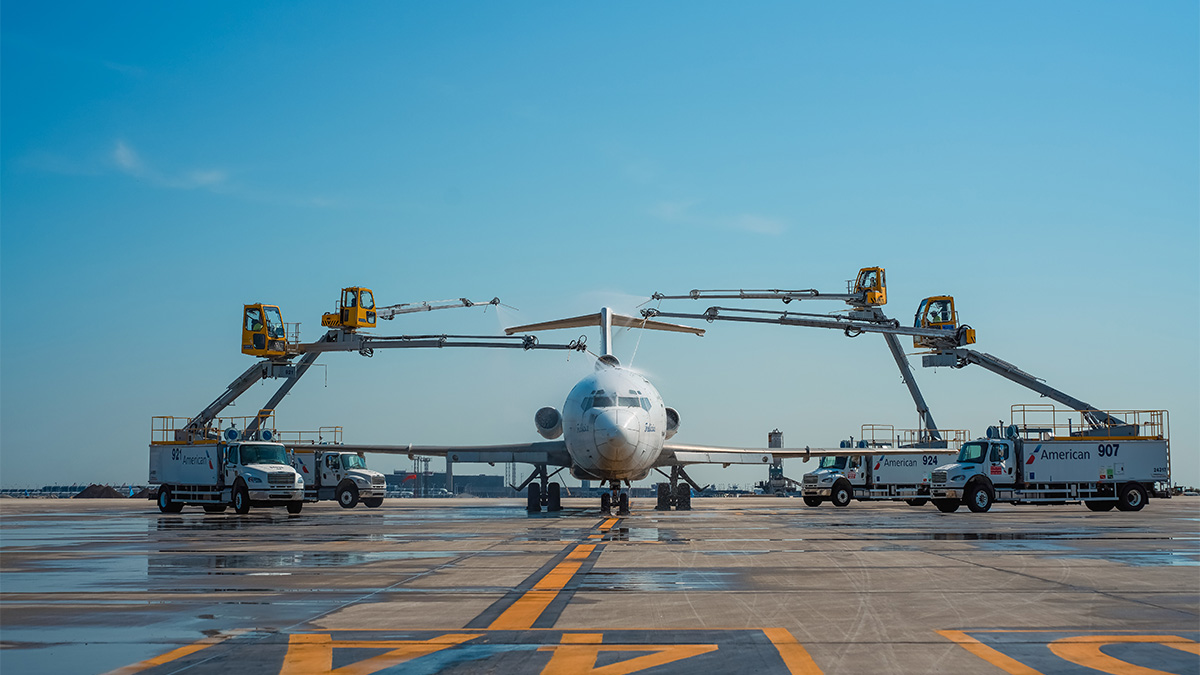Source: American Airlines

While leaves may still be turning, aircraft deicing is already underway. The season, which began Oct. 1, runs through the spring across American’s network. While deicing can add a few extra minutes to the usual pre-departure routine, it’s critical to keep American’s network — and customers — moving safely and efficiently in the winter months.
Preparation starts months in advance
American begins preparing for deicing season well before the first snowflake falls. Planning typically starts in the summer. This means updating procedures, training staff, inspecting and maintaining equipment and procuring deicing fluids. The goal is to ensure readiness at all airports that conduct deicing so when winter weather hits, teams can respond quickly and effectively without delays.
Deicing is a critical safety procedure
Deicing is not just a seasonal task — it’s a vital safety operation. Airlines simply cannot operate in frost, ice and snow conditions without first deicing. The procedure ensures that aircraft are free of these contaminants before takeoff so that wings generate lift and control surfaces work as intended. The deicing process is governed by the Federal Aviation Administration and international counterparts. It is coordinated closely with flight crews, the airline’s Integrated Operations Center, airport teams and vendor partners, ensuring every aircraft is cleared correctly, safely and efficiently.
Specialized equipment and fluids are used
Deicing involves the use of specialized trucks equipped with tanks filled with glycol-based fluids. Deicing fluid (type I) is orange, heated to 140 degrees Fahrenheit and sprayed to remove ice and snow, while anti-icing fluid (type IV) is green and applied after deicing to prevent further accumulation. The selection of fluid depends largely on the weather conditions.
Sometimes, conditions are too severe to deice
The safety of American’s customers, team members and equipment ultimately fuel the airline’s deicing decisions. And sometimes that means deicing is simply not possible. In certain situations, such as frozen mixed precipitation or prolonged below-freezing temperatures, the combination of the weather conditions and fluids available could lead American and other operators to temporarily pause deicing operations — and in turn, all ground operations at that airport. This is due to a lack of what is called holdover time — the carefully calculated time afforded to aircraft between when their deicing is completed and when they take off. While this is uncommon, it can happen during certain severe weather events.
American deices at some unexpected airports
While deicing is typically associated with cold-weather airports like Chicago O’Hare (ORD), LaGuardia Airport (LGA) or Boston Logan Airport (BOS), American also performs deicing at several locations where one might not think of colder climates — but where winter weather can still pose a threat. Airports like Dallas Fort Worth International Airport (DFW), Charlotte Douglas International Airport (CLT), and occasionally Phoenix Sky Harbor International Airport (PHX) or Nashville International Airport (BNA), can experience weather conditions that require deicing procedures. ORD is American’s largest and busiest deicing destination, with aircraft deiced 6,000 to 10,000 times per season (depending on the severity of the winter), using approximately 500,000 gallons of glycol for the six months of deicing season.
